Hollywood & Spine Archive: Never Say Die
An overview of the novelization to THE GOONIES, originally published in October 2020.
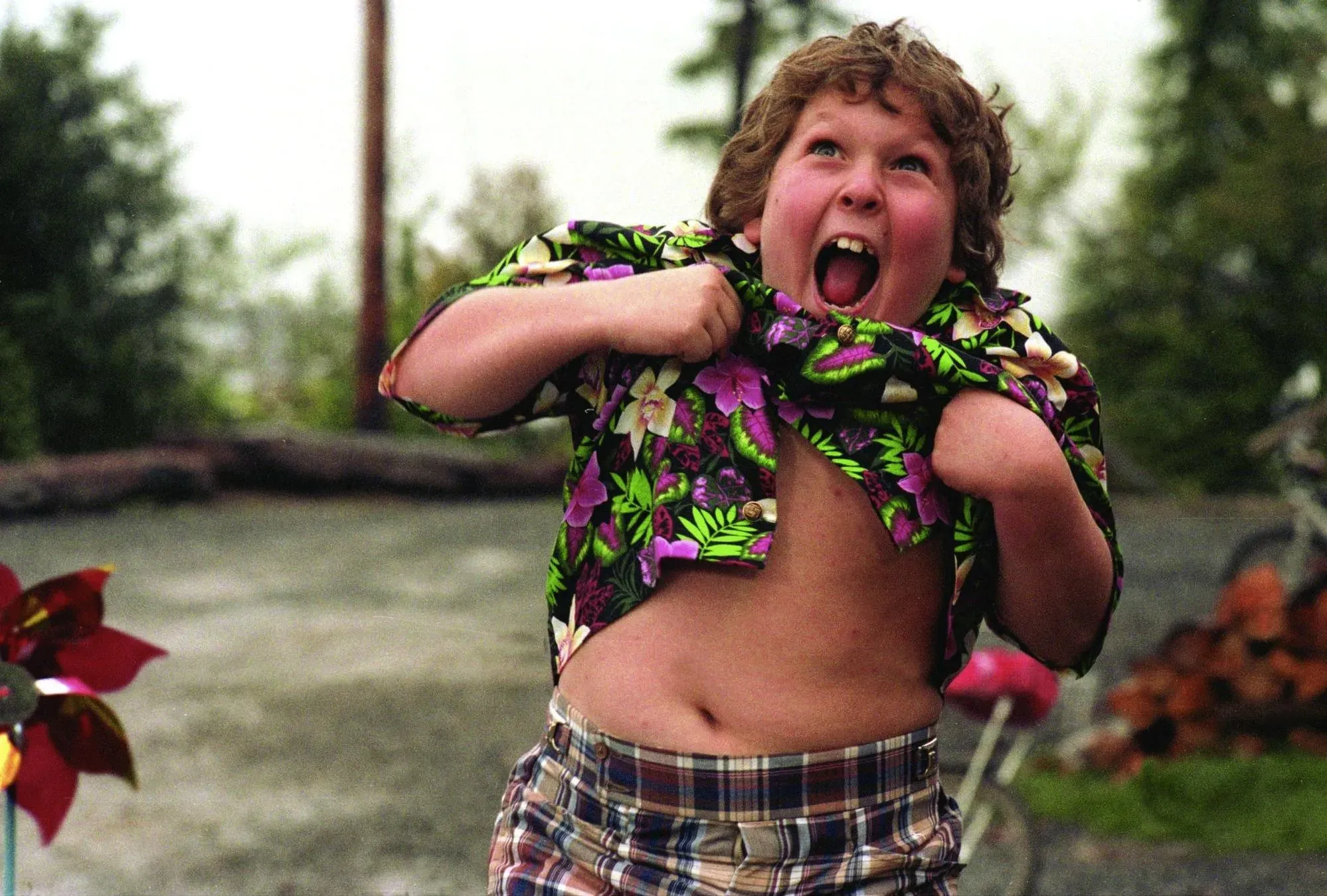
I have a really soft spot for this kind of dumb movie - I dream of a longer cut for home video with more of those wacky deleted scenes, perhaps for the film's 40th anniversary next year (some of them appeared in a television edit) - and I thought the novelization was really well done! James Kahn did a terrific job in his adapted bibliography. (He later became something of an odd renaissance man - at one point, Facebook was showing me posts of his original songs with pro-environment lyrics...as well as his selling of original manuscript pages as NFTs, which are kind of at odds with each other.) And I'm always gonna shout out a novelization you can get electronically; for reasons too arcane to get into in an intro, it's not a common practice! (originally published 10/20/2020)
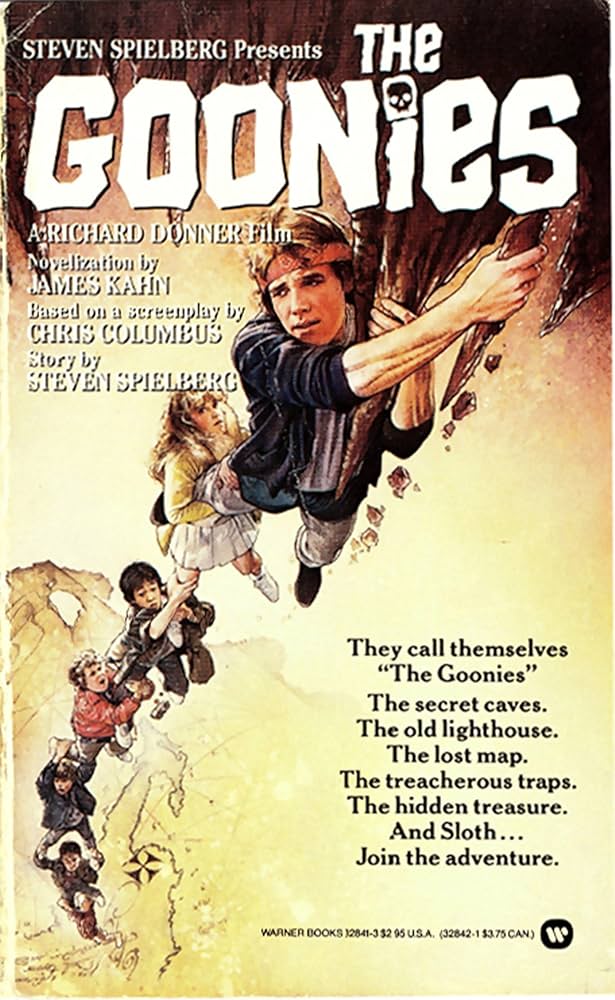
The Goonies by James Kahn (based on a screenplay by Chris Columbus; story by Steven Spielberg) (Warner Books, 1985)
The pitch: A group of suburban misfit kids have an adventure so extraordinary that it practically invents a modern genre of movie.
The author: A published author but an emergency room doctor by trade, James Kahn was called by chance to consult on (and act in) the medical scenes in E.T. The Extra-Terrestrial. He passed on some writing to Steven Spielberg, scoring adaptation gigs for Poltergeist, Return of the Jedi and Indiana Jones and The Temple of Doom. Kahn later wrote and produced on Melrose Place, Star Trek: Voyager, Xena: Warrior Princess, St. Elsewhere and the short-lived '80s CBS sitcom E/R (which weirdly also co-starred George Clooney).
The lowdown: Hollywood has spent a few decades trying to recapture that Amblin magic. From Super 8 to Stranger Things, the cinematic aesthetic perfected by Steven Spielberg's production company in the '80s has had an immeasurable impact on what Gen X and older millennials find pleasing in movies. The personalities are big and the whimsical adventures are bigger - with plenty of good guys winning in the end.
The Goonies wasn't the first of Amblin's successes - thanks to Back to the Future, it wasn't even the biggest Amblin film of 1985 - but there's something really resonant about this one. The deft combination of wisecracking young teens and improbable high-concept action (pirate ships! booby traps!) makes this one really memorable - and so the pressure's on to make this as memorable as the film it's based on.
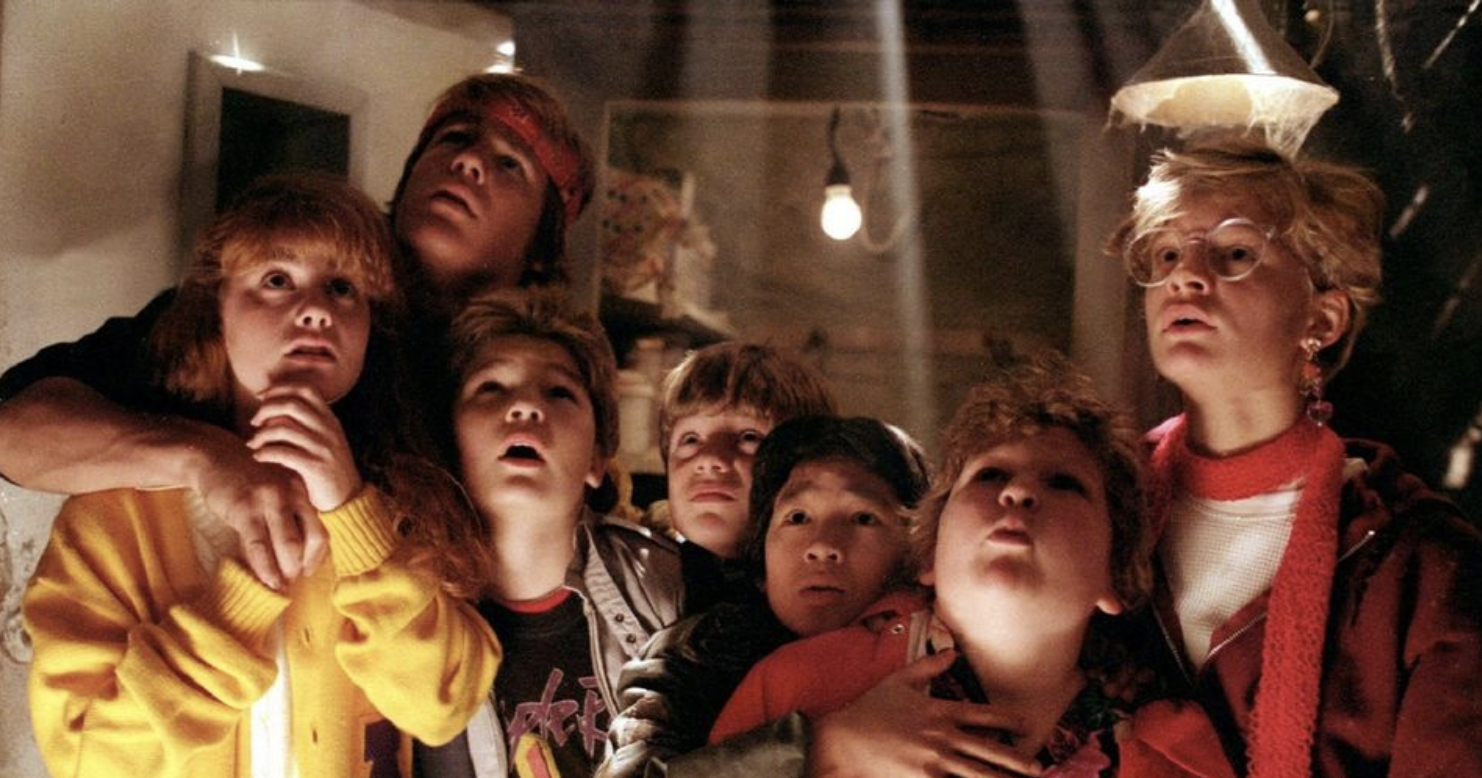
You're in luck: if you read novelizations for the details (and who doesn't, really?) there's a lot to love about Kahn's adaptation about The Goonies. (His novelizations before that are strong examples of the form, too: Return of the Jedi plants tantalizing glimpses of the Star Wars saga's future, like the revelation that Darth Vader fell into a molten pit and required his armor to survive.) There's a lot of quality stuff on the margins of the story that gets to bloom a bit here. Want to know the characters' government names? You get that. (Hello, Clark "Mouth" Devereaux and Rich "Data" Wang!) Want to know how to become a Goonie - sorry, Goony? Simply say the rhyming oath the gang recites herein. Some of the characters have extra traits that wouldn't have made sense on screen (Mouth is a compulsive rhymer), while others just play out a little differently (among Data's wacky inventions: an inflatable outfit to intimidate bullies).
But Kahn does something rather brilliant that no book covered in Hollywood & Spine has yet done: left with a myriad of distinct characters to follow through the plot, Kahn flips the POV from third-person to first-person, telling almost the entire story from lead protagonist Mikey's perspective. And he really sells it, too! Just as Sean Astin plays him in the film, the prose Mikey is a wide-eyed dreamer, a firm believer in the power of friendship who's determined to find One-Eyed Willy's missing treasure to save his friends. He's also a very humorously stunted 12-year-old, not fully getting the whole "girls" thing yet.
You may be wondering, then, how scenes where Mikey isn't present play out in the book. Kahn picks some cute workarounds here: the film's opening (and closing - more on that in a bit) is summed up in a newspaper article in which the film's villains, Mama Fratelli and her idiot sons Jake and Francis, escape from prison. The only place the narration deviates is when Mikey cedes an entire chapter to the Goonies' signature jester Chunk, who recounts in typical long-winded fashion how he got caught by the Fratellis and met up with Mama's neglected third child, "Sloth." It's one of the film's funniest sequences, and the eye-rolling way in which Chunk gets his points across is pretty solid. It's a real treat for Goonies fans, of which there are surely many.
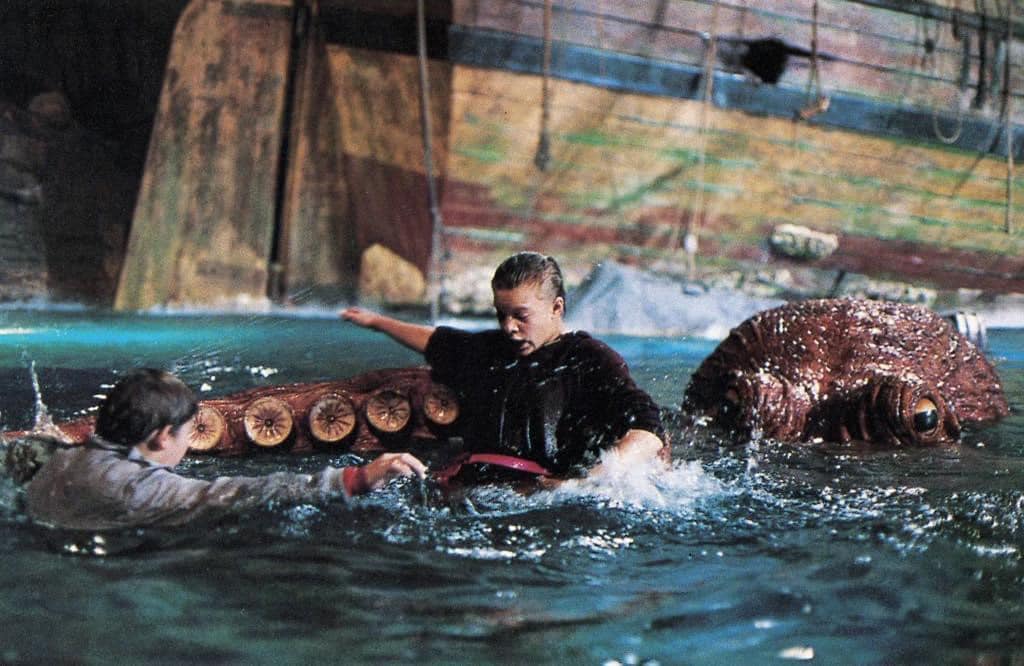
The cutting room floor: The Goonies is famous for a myriad of deleted scenes that ended up in television airings or on DVD. (Entire subplots were excised from the script in pre-production, including something involving escaped gorillas.) At least three of the most famous ones - two of which were filmed - ended up in the novelization:
- In the first part of the gang's trip with the treasure map, they stop by a convenience store and come face to face with the rich bully Troy and teen girls/future Goonies Andy and Stef. He almost burns the map, but is stopped by Mikey's older brother Brand (played in the film by future Thanos Josh Brolin), who fails to wrangle back the kids or the map.
- During the Goonies' time in a coin-filled well, Andy and Stef are initiated into the group with the aforementioned oath, which is interrupted by a surge of leeches in the well. Data destroys them by electrocuting them with a battery - a moment which, it's awkwardly implied, gives the girls a bit of a tingle of their own. Gross!
- Arguably the most famous excised sequence, because it's actually referenced in the film, the gang encounters an octopus on their swim to the pirate ship. (This passage was excerpted in promos for the book itself, ironically enough.)
Another scene that didn't appear in the final cut involves the kids taking a long raft ride on their way to One-Eyed Willie's ship and telling stories to keep each other alert. Unwittingly or not, it becomes an Amblin version of The Breakfast Club<: Andy dives deep into her Catholic guilt, Data expresses his dream of building a sustainable underwater society, Brand confesses his claustrophobia and Mouth...retells The Monkey's Paw. (Mikey, for his part, spins a few yarns throughout the story, including an anecdote about his parents winning a game show and a misadventure he had a child while exploring the suburb of Cuesta Verde - the location of the events of Poltergeist.)
Finally, those who've been clamoring for a Goonies sequel for the last 35 years will appreciate the book's epilogue: additional news clippings detail how the families living in the Goon Docks used the pirate treasure to not only save their homes, but shut down the country club and make it a community center. One of the notable events there: the bar mitzvah of Chunk's new adopted brother, Jerry "Sloth" Cohen.
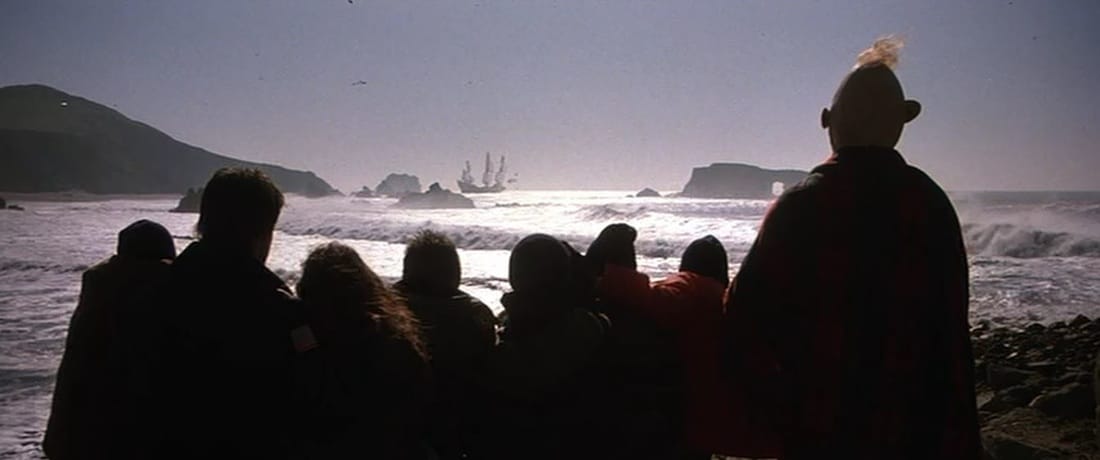
The last word: Though some have deemed it on the stranger side of novelizations, The Goonies packs the kind of charm as a book that you'd expect from this '80s cult classic. To this fan, it's definitely more treasure than walk the plank. (It's also notable as a rare novelization you can get as an e-book!)
